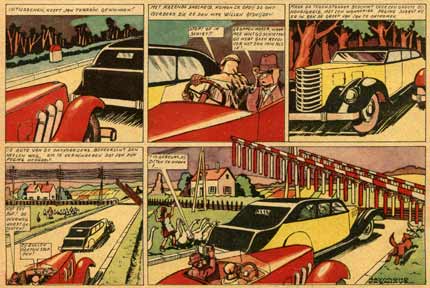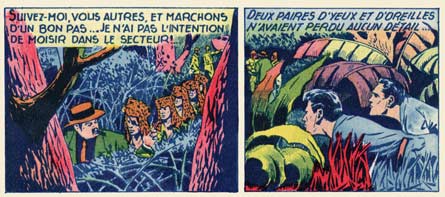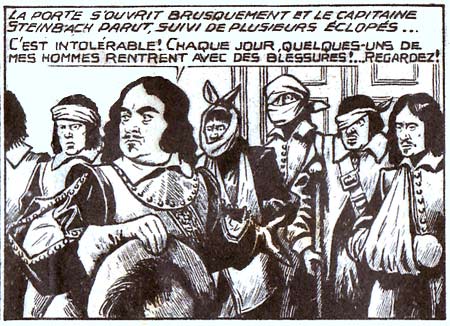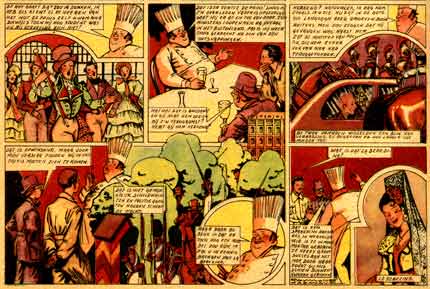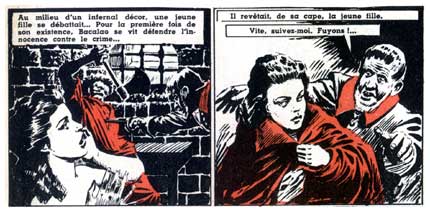Prins tegen wil en dank (1933)
Raymond Cazanave was seriously wounded and imprisoned during World War I. After the War, he went to work as a decorator. From 1922, he did his first illustration work for the magazine Les Petits Bonshommes. In this same magazine, he created his first comic, 'Cascarin' the folowing year. In addition, Cazanave started working as a journalist for Le Bourguignon, where he worked for over ten years, writing articles and making drawings and strips.
La Course au Milliard
He expanded his comic activities in the late 1930s, working for magazines like Jeunesse Magazine and Pierrot, for which he drew 'Fifrelin, Petit Journaliste', 'Le Chevalier Mystère', and 'Boubou le Sportif'. He cooperated on Lisette in 1940 and 1941, creating stories like 'Les Gaietés de la Campagne', 'À Bon Chat Bon Rat', 'Bobette, Bobine et Bobby' and 'Je Dis Non'.
Le Messager de la Reine (L'Intrepide, 28-9-1949)
After World War II, Cazanave began collaborations with Bir Hakeim ('Marin Breton'), Frivolet ('Robert Chevallier', 'Benoît Leborgne'), Wrill ('Le Mystère de l'Atome'), and the collection Vaillance ('Les Enfants du Trappeur'). He joined the magazine Coq Hardi in 1946 with 'Chasse au Corsaire' and his series 'Capitaine Fantôme', in collaboration with Marijac. At the same time, he illustrated several books.
Prins tegen wil en dank
In Vaillant, he began illustrating 'Le Fifre de Valmy' and he succeeded Auguste Liquois on 'Fifi, Gars du Marquis'. After brief appearances in Cap'taine Sabord ('Prince Malgré Lui') and King Kong ('Le Vautour de Minuit'), he joined the magazine L'Intrépide. There, he did comic adaptations of the films 'Rocambole' and 'Le Secret de Monte-Christo', in cooperation with writer George Fronval, and 'Le Messager de la Reine', 'La Course au Milliard', 'Surcouf' and 'Sabre au Clair!'.
L'Étrange Marquis de Carrepont (Bravo!, 1951)
Raymond Cazanave cooperated on the collections Jeunesse, 34 and Hurrah! in the late 1940s. From 1950, he drew 'Pirate Malgré Lui', 'L'Étrange Marquis de Carrepont' and 'Le Secret du Capitaine Wake' in Bravo!. Throughout the 1950s, he was present in Le Petit Canard ('Ismaïla, Fleur des Sables'), Les Romans-Images ('La Vraie Manon', 'Rocambole') and Ima, l'Ami des Jeunes ('Le Noël de Kerduff', 'Le Soleil Royal', 'Le Prodigieux Destin de W. Reinhardt'). Raymond Cazanave did his final comics work for Vigor, with the series 'Bob Corton' from 1954 to 1960.
Le Mystère de l'Atome 1



